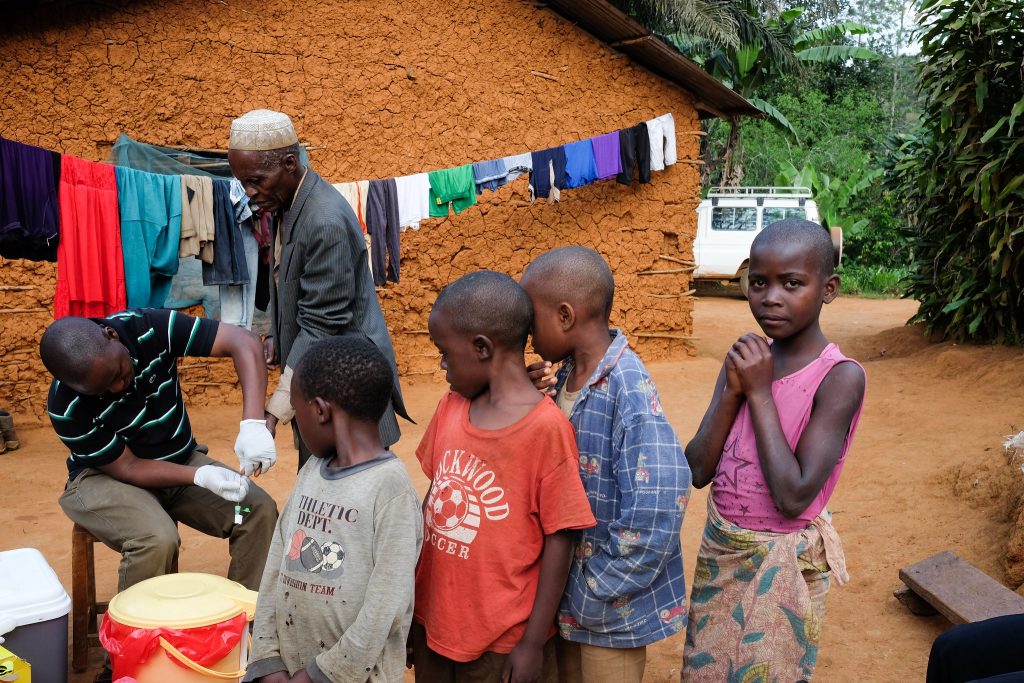The treatment of NTDs typically relies heavily on close human contact. In light of this1, we’ve seen community-based surveys, active case-finding activities and mass treatment campaigns for NTDs being postponed until further notice. Although critical NTD interventions, such as support for prompt diagnosis, treatment and care of NTDs and essential vector control measures like mosquito bed net distribution, continue where possible, they are likely to be de-prioritised with health facilities under pressure from the COVID-19 response.
COVID-19 is likely to be one of many health concerns affecting populations in low and middle-income countries (LMICs). For example, in Sierra Leone, where Ebola caused 3,589 total deaths over a 19-month period, malaria led to 4,326 deaths in 2013 alone. Indeed, the number of Ebola infections were few relative to NTD prevalence among West African populations, where 10 million people are estimated to be affected by at least one NTD, with many more suffering from multiple conditions.
Adapting to the new reality
During disease outbreaks, the main burden of NTD service provision often falls on the same community health workers who are mobilised during an outbreak – a vital and typically already over-stretched group. If they are pulled into the COVID-19 response, NTD programmes will feel the impacts even when restrictions on delivering these programmes have been lifted. This is even more concerning when we consider the potentially devastating loss of life among health workers2, crippling service delivery at facility level and in turn placing a huge strain on community-level provision.

With the pandemic limiting the ability to conduct health outreach and treatment, and the COVID-19 response falling onto typically already over-stretched community health workers and facilities, there is a high risk that COVID-19 will jeopardise ongoing efforts to reduce mortality and disability due to NTDs. Lessons and best practice from past epidemic responses can be applied to help organisations at the forefront of NTD provision adapt.
- Integrating NTD programming into the COVID-19 response
As recommended by the WHO, existing NTD platforms, surveillance mechanisms and WASH/health education opportunities can be used to support the implementation of COVID-19 related measures. There is scope for synergies between different NTDs, with WASH, and within wider health systems, as our current work on NTDs with DFID and CIFF have shown.
Experience from previous epidemics also shows that NTD programmes can become part of the solution. In the case of the West Africa Ebola outbreak, the integration of treatment for other health conditions such as malaria in community-based Ebola care facilities had the effect of increasing community acceptance and use of the centres. Incorporating local people’s health priorities – such as NTDs – into key COVID-19 interventions may, therefore, have a dual effect of increasing responses’ effectiveness, while allowing NTD provision to continue.
- Carrying out equity analysis to understand how existing presence of NTDs may affect vulnerability to COVID-19
Our work over the years has shown that the success and failure of health programmes is highly contingent on how well social factors have been taken into consideration. This is particularly relevant for NTDs, as ‘neglect’ is inherently social: populations living in poverty, without adequate sanitation and in close contact with potential sources of infection, such as domestic animals and livestock, are typically those worst affected. Furthermore, disability, disfigurement, stigma, lost livelihoods and poverty which may occur as a result of NTDs, often cause further marginalisation and vulnerability. Accounting for the pre-existing causes for marginalisation will be critical for reducing the impact of COVID-19 on people already affected by NTDs.
- Identifying potential barriers and opportunities for social behavioural change
Tackling both NTDs and COVID-19 depends on unprecedented widespread social behavioural change and the time to learn is extremely limited. As we observed during the West Africa Ebola outbreak, historical and political factors and power dynamics influenced mistrust of centralised health messaging, and shaped perceptions of health workers and response teams as deliberately spreading the virus. Community responses to routine NTD drug distribution activities may, therefore, be transformed within the wider epidemic context – so sustained and effective engagement with populations is key.
- Real-time monitoring and sharing of data to support adaptation.
The impact of COVID-19 on NTD provision will be felt severely by some of the world’s most vulnerable people. Robust, up-to-date and contextually relevant information is critical to informing changes in NTD programming and better understanding the impact these may have on the populations that rely on it the most.
Traditionally, the timing of evaluations is seen as running in parallel to programme implementation. Increasingly, however, we are helping our partners at the programming stage by conducting formative work, so that activities can be more effective from the outset. This approach aligns with the adaptation and re-programming health services are undertaking to move with the dynamic and fast-shifting impacts of the current pandemic. Real-time monitoring and sharing of data and findings can also help implementing organisations adapt and make timely adjustments to programming.
Integrating past lessons
As health programming and NTD interventions respond to the complex and fast-moving nature of the pandemic, it is vital that past lessons and up-to-date insights are integrated into programmatic responses. The further neglect of NTDs means the impact of the pandemic will be felt severely by some of the world’s most vulnerable people. Learning from best practice and ensuring evidence around NTD provision continues to be generated is crucial to the continuation of interventions where they are most needed.
Author: Marco Maragno

